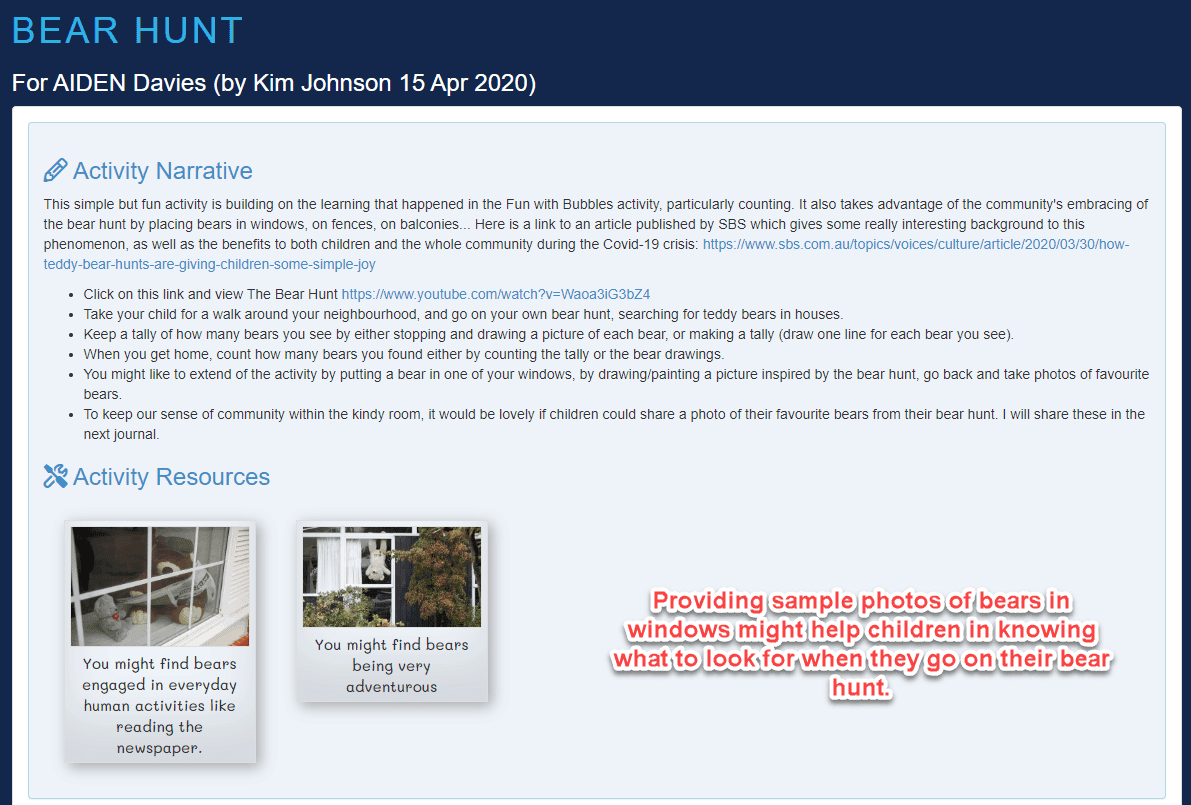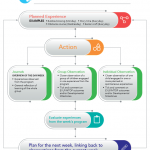Creating a sense of belonging and security in uncertain times with a very special Home Activity
We’re going on a Bear Hunt!
There is no doubt that all of us have had our lives unexpectedly disrupted by the Coronavirus. We might be working more from home, home-schooling our own children, dealing with decreased work hours, or supporting vulnerable family members.
It is very likely that the children in our services are also feeling a little insecure with parents working from home, grandparents not visiting, and familiar routines (like going to childcare) suddenly changed.
Something that has brought me some comfort and sometimes a little giggle in this time of change and uncertainty: the display of bears in people’s houses. My favourite so far is the abseiling bear in the next street. I am wondering if this embracing of ‘We’re Going on a Bear Hunt’, might be used by educators as a Home Experience in EarlyWorks?
How might this look?
Intended Outcomes
- 1.1 Children feel safe secure and supported
- A bear hunt with family will create opportunities for children to openly express their feelings, engage with their community, and feel safe within that community. So very important during a time of change and uncertainty.
- 2.1 Children develop a sense of belonging to groups and communities and an understanding of the reciprocal rights and responsibilities necessary for active community participation.
- The embracing of the bear hunt by communities is a brilliant example of community participation on two levels:
- Participation of residents in finding a bear and displaying it.
- Participation of children in going on a bear hunt to find and enjoy those bears.
- The embracing of the bear hunt by communities is a brilliant example of community participation on two levels:
Narrative (description of activity)
- If you have the book ‘We’re Going on a Bear Hunt’ read that with your child. If you don’t have the book, share this delightful version on YouTube https://www.youtube.com/watch?v=Waoa3iG3bZ4
- Go on a bear hunt in your suburb. During the bear hunt you might like to:
- Keep a tally of the number of bears you find.
- Draw pictures of favourite bears.
- Take photos of all of the bears
- Talk about why so many people have put bears in their windows. Allow your child to come up with their own hypotheses.
- When you get home you might like to:
- Go through all of the photos and look for the funniest bear, the smallest bear, the biggest bear, the fluffiest bear, favourite bear…
- Send an email to grandparents or special friends, sharing photos of the bears.
- Use the tally to count how many bears you found, then your child might phone or face time grandparents and suggest they go on a bear hunt and count how many bears there are in their street
- Paint favourite bear
- If you haven’t already, put a bear in one of your windows, and watch and see if anyone stops to look at it.
- Share your child’s reactions, comments, photos of bears, photos of drawings, or anything else your child wants to share, in EarlyWorks.
Bear Hunt Journal
Educators can use the family comments and photos to create a journal entry for the Bear Hunt activity. This journal can then be shared with the families to keep the children connected with each other and hold onto the sense of belonging to the childcare service.
- The narrative might include a summary of the family comments/observations;
- Parent observations can be used to record observed outcomes and outcome comments for each child;
- The reflection of learning might include a summary of the learning observed by the families;
- The photos from each family can be shared in the journal, allowing the children to see what their childcare friends found on their bear hunt.
Family View of Home Activity

Family feedback and Images








